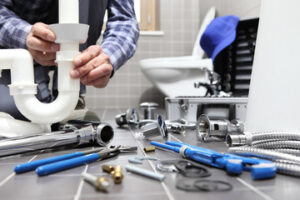Atlanta Birth Injury Lawyer helps families file claims against medical professionals responsible for injuries during labor and delivery. They help families recover compensation for damages including medical expenses, special education costs, ongoing therapy, home modifications, lost income, pain and suffering, and a diminished quality of life.

A birth injury lawyer can help you build a strong case against the medical professionals who caused your child’s injuries. They will gather evidence, including witness testimonies and medical records, and file the necessary paperwork. In addition, they can help you get the compensation that you deserve.
Medical negligence and malpractice are a common cause of birth injuries. Doctors, midwives, nurses and other medical professionals have a legal duty to provide quality care that meets the standard of practice. When they fail to meet this standard, it can be considered a breach of duty. This can lead to devastating results for children and their families.
Injuries from a traumatic birth can take an emotional toll on a family, but they also create tremendous financial strain. Many of these injuries result in long-term care costs, requiring expensive medications and surgery. These costs, as well as lost earnings and expenses associated with home health aides and home modifications, can add up to millions of dollars over the course of a lifetime. This is why it is so important to seek fair compensation from the liable parties.
While no amount of money can undo the damage caused by a birth injury, it can help ease some of the financial pressure on a family and motivate healthcare providers to improve safety training. An experienced attorney can help you determine the full value of your damages and ensure that any settlement or verdict accurately reflects them.
When choosing an attorney, ask about their experience handling medical malpractice cases and their success rate in obtaining favorable pretrial settlements. Inquire about the number of cases that they have taken to trial, as well.
Experience
An experienced birth injury lawyer has the knowledge and skills to help you secure the compensation you deserve. They will investigate your case to see if there is a valid claim and file a lawsuit against the medical providers responsible for your child’s injuries. They will also negotiate with the insurers to reach a settlement and avoid litigation. If the settlement cannot be reached, a jury or judge will decide on a damages award.
The legal process is complex, and it is important to hire an attorney who is well-versed in the specifics of birth injury cases. A lawyer who has spent a significant amount of time in the courtroom will understand how to address judges and other attorneys, and will be better equipped to win your case. When choosing a birth injury lawyer, make sure to examine them as thoroughly as you would a doctor or other professional.
In addition to the damages awarded for your child’s injuries, you may receive compensation for lost income. This can be helpful if you had to leave work to care for your child. You might also be entitled to reimbursement for additional expenses such as physical or occupational therapy.
A medical malpractice lawsuit can be very complex, and the best birth injury lawyers will have extensive experience with these cases. They will know how to find the evidence and witnesses necessary to prove that the medical professionals violated their duty of care. They will also be able to determine if the injury was preventable, and if it could have been avoided with more appropriate medical care.
The attorneys at JJS have decades of combined experience representing children and mothers in claims involving traumatic birth injuries, including spinal cord injuries like paralysis and numbness. They have recovered hundreds of millions of dollars for victims, including record-setting verdicts in multiple states.
Knowledge
When a child is born with a severe birth injury, they may suffer permanent damage to their body and mind. This can result in long-term care costs that are often not covered by insurance. These expenses can include prescriptions, loss of income, child care, and the cost of medical equipment and home modifications. A successful lawsuit can help families recover these costs and provide their child with the care they need.
Your lawyer will review your child’s medical records and consult with experts to identify evidence of malpractice. The lawyers will then build a case to establish that the medical professional did not adhere to a standard of care under the circumstances. This is a critical step in proving negligence and winning compensation for your family.
A good lawyer will also be familiar with current legal trends and civil procedures. They should have a good track record in handling similar cases and will be able to negotiate with insurers on your behalf. They will also be able to explain how your claim will proceed and keep you updated throughout the process.
You should also ask about a potential attorney’s level of experience in handling medical malpractice claims. An experienced lawyer will have more knowledge about medical malpractice law, recent court decisions, and civil procedures than a new attorney. They may also have a wider professional network that could benefit your case.
A skilled Birth Injury Lawyer can help you obtain the compensation that you deserve to pay for your child’s lifetime care costs. They can also hold negligent doctors responsible for their mistakes, which will help keep other parents and children safe in the future.
Reputation
A reputable birth injury lawyer is one who has extensive experience in the medical malpractice field. They can help you build a strong case against the doctor or hospital that committed negligence, file paperwork with the court of law, and provide the best possible financial compensation to your family. They will also work to minimize the time it takes to reach a settlement, as a trial can prolong your legal case and reduce your chances of winning compensation.
Many personal injury lawyers and law firms offer free consultations to determine if you have a case. During this consultation, the attorney will listen to your story and determine whether you have a valid medical malpractice case. They will also explain the steps that are needed to file a lawsuit and will work on a contingency fee basis, meaning you won’t have to pay any fees upfront.
In a New York birth injury lawsuit, you must prove that the doctor or medical professional violated the standard of care. This is usually done through evidence such as medical records and witness testimony. The lawyer will also bring in medical experts to help establish what the standard of care is and how the doctor departed from it.
Injuries caused by medical negligence during labor and delivery can be devastating for families. They can lead to long-term costs that can add up quickly, including the cost of life-long treatment and therapy. These costs can easily exceed $1 million, and it is important to have a medical malpractice attorney on your side who knows how to handle these cases in order to maximize the amount of money you receive. In addition, a reputable lawyer will have experience dealing with insurance companies and know how to get the most out of your claim.
Cost
The cost of hiring a birth injury lawyer depends on the lawyer’s experience and expertise. The best way to determine this is by asking questions about their legal experience. The more experienced the lawyer, the more familiar they will be with relevant laws, recent court cases, and civil procedures. They may also have a wider professional network that can potentially benefit your case.
A birth injury lawyer can help families pursue compensation for the medical costs and lifetime care costs of their children who have suffered from a preventable birth injury due to negligent health care practices by doctors or hospitals. The lawyers can take over communications with the insurance companies, doctor’s offices, and defense attorneys to maximize financial payouts from a settlement or jury verdict.
Medical negligence during labor and delivery is a common cause of birth injuries. Whether doctors, midwives, or nurses are responsible for the negligence, the results can be devastating to the child and family. Fortunately, medical negligence claims are often settled with financial compensation.
A qualified birth injury attorney can build a strong claim by proving that the defendant breached their duty of care to patients, including the mother and child. These breaches include a failure to follow the standard of care, which is based on a number of factors including the circumstances surrounding the case.
Some examples of medical negligence during the birth process include using vacuum extractors or forceps incorrectly, failing to deliver a C-section on time, and pulling the baby too hard during a Cesarean section. Other examples of malpractice include the failure to diagnose or treat a condition that led to an injury, such as spinal cord injuries.






